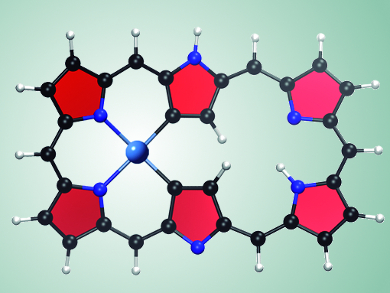Metalation can be used to spontaneously produce Möbius aromatic/antiaromatic species using expanded porphyrins. These intrinsically chiral species have many potential applications in chirality sensing and asymmetric catalysis and their synthesis is quite challenging.
Mercedes Alonso and colleagues, Vrije Universiteit Brussels, Belgium, have used quantum chemical calculations to rationalize experimental observations for metalated hexaphyrins. The team demonstrated that the molecular topology of group 10 and group 11 metal complexes of hexaphyrins depends on a sensitive interplay between the intrinsic ligand strain and the metal–ligand interaction strength.
Using the group’s proposed guidelines, the design of hexaphyrin complexes with specific properties can be optimized by fine-tuning the effective charge of the metal and the aromaticity of the ligand.
- Metalated Hexaphyrins: From Understanding to Rational Design,
Mercedes Alonso, Balazs Pinter, Paul Geerlings, Frank De Proft,
Chem. Eur. J. 2015.
DOI: 10.1002/chem.201502894




